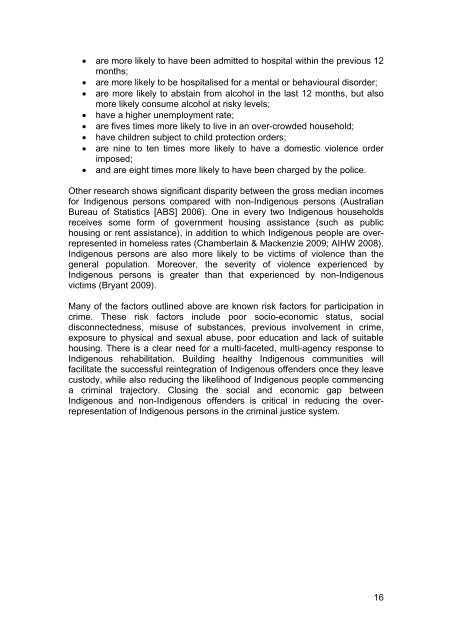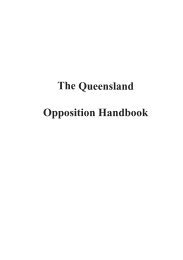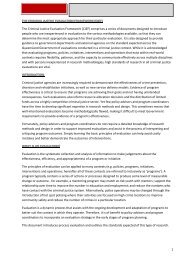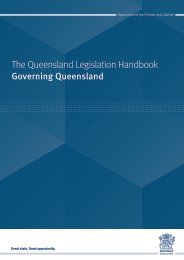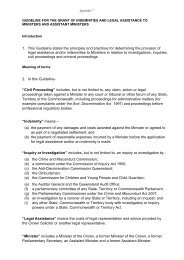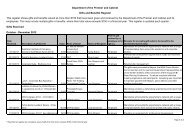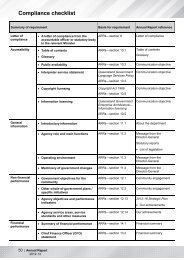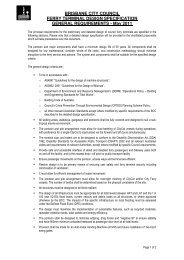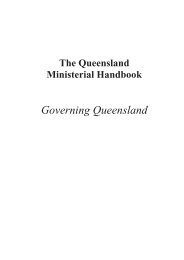Rehabilitative needs and treatment of Indigenous offenders in ...
Rehabilitative needs and treatment of Indigenous offenders in ...
Rehabilitative needs and treatment of Indigenous offenders in ...
Create successful ePaper yourself
Turn your PDF publications into a flip-book with our unique Google optimized e-Paper software.
are more likely to have been admitted to hospital with<strong>in</strong> the previous 12months; are more likely to be hospitalised for a mental or behavioural disorder; are more likely to absta<strong>in</strong> from alcohol <strong>in</strong> the last 12 months, but alsomore likely consume alcohol at risky levels; have a higher unemployment rate; are fives times more likely to live <strong>in</strong> an over-crowded household; have children subject to child protection orders; are n<strong>in</strong>e to ten times more likely to have a domestic violence orderimposed; <strong>and</strong> are eight times more likely to have been charged by the police.Other research shows significant disparity between the gross median <strong>in</strong>comesfor <strong>Indigenous</strong> persons compared with non-<strong>Indigenous</strong> persons (AustralianBureau <strong>of</strong> Statistics [ABS] 2006). One <strong>in</strong> every two <strong>Indigenous</strong> householdsreceives some form <strong>of</strong> government hous<strong>in</strong>g assistance (such as publichous<strong>in</strong>g or rent assistance), <strong>in</strong> addition to which <strong>Indigenous</strong> people are overrepresented<strong>in</strong> homeless rates (Chamberla<strong>in</strong> & Mackenzie 2009; AIHW 2008).<strong>Indigenous</strong> persons are also more likely to be victims <strong>of</strong> violence than thegeneral population. Moreover, the severity <strong>of</strong> violence experienced by<strong>Indigenous</strong> persons is greater than that experienced by non-<strong>Indigenous</strong>victims (Bryant 2009).Many <strong>of</strong> the factors outl<strong>in</strong>ed above are known risk factors for participation <strong>in</strong>crime. These risk factors <strong>in</strong>clude poor socio-economic status, socialdisconnectedness, misuse <strong>of</strong> substances, previous <strong>in</strong>volvement <strong>in</strong> crime,exposure to physical <strong>and</strong> sexual abuse, poor education <strong>and</strong> lack <strong>of</strong> suitablehous<strong>in</strong>g. There is a clear need for a multi-faceted, multi-agency response to<strong>Indigenous</strong> rehabilitation. Build<strong>in</strong>g healthy <strong>Indigenous</strong> communities willfacilitate the successful re<strong>in</strong>tegration <strong>of</strong> <strong>Indigenous</strong> <strong>of</strong>fenders once they leavecustody, while also reduc<strong>in</strong>g the likelihood <strong>of</strong> <strong>Indigenous</strong> people commenc<strong>in</strong>ga crim<strong>in</strong>al trajectory. Clos<strong>in</strong>g the social <strong>and</strong> economic gap between<strong>Indigenous</strong> <strong>and</strong> non-<strong>Indigenous</strong> <strong>of</strong>fenders is critical <strong>in</strong> reduc<strong>in</strong>g the overrepresentation<strong>of</strong> <strong>Indigenous</strong> persons <strong>in</strong> the crim<strong>in</strong>al justice system.16


